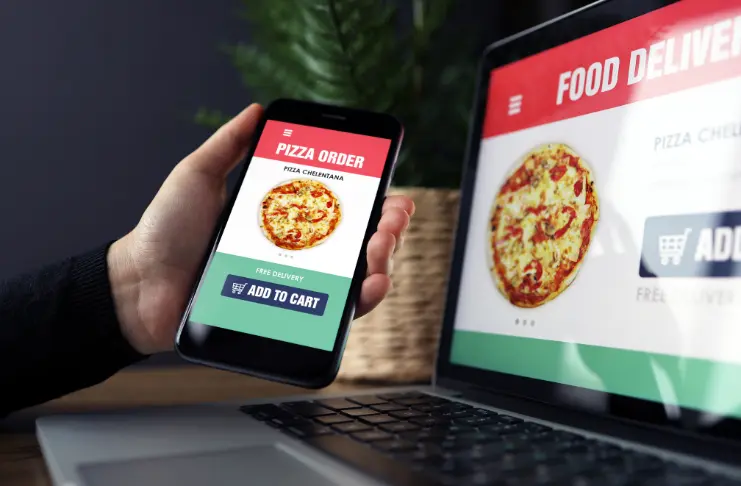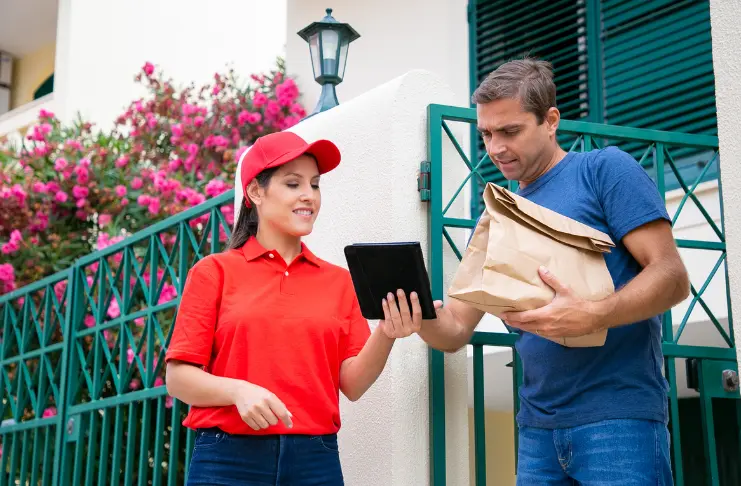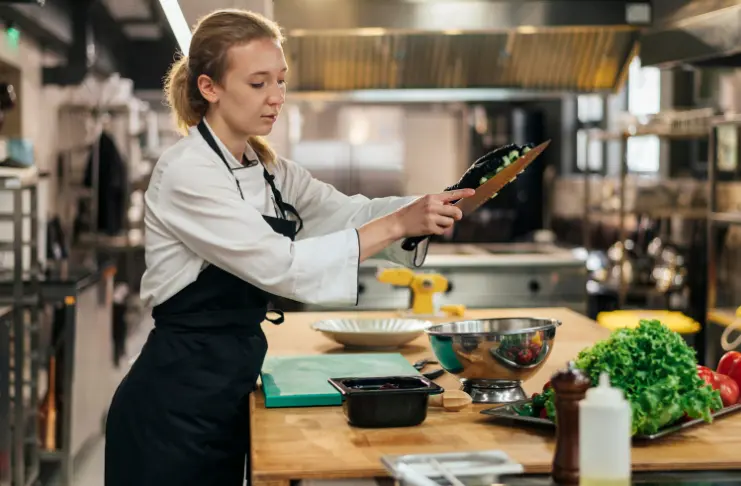
What began as a small local startup in Palo Alto, California, is now leading the food delivery scene in the U.S. As of March 2024, DoorDash dominated the market with a massive share of 67%, outpacing other platforms like Uber Eats.
For restaurants, DoorDash represents an excellent growth opportunity. Its reach can drive significant order volume and value for restaurants. So, if you’re a restaurant operator in the U.S. and DoorDash isn’t influencing your business decisions, you’re likely leaving revenue on the table.
Therefore, understanding the delivery platform’s influence is critical to ensure sustained profitability and competitive differentiation.
This blog will explore the major DoorDash restaurant statistics, including its market share, influence, and user trends, which are driving its success.
KEY INSIGHTS
1. DoorDash is at #1 in the U.S. food delivery market. 2. The platform reached 42 million active users in 2024, adding over 5 million users in 12 months. 3. In Q4 2024, DoorDash hit 18 million DashPass subscribers. 4. 100,000 new merchants joined the marketplaces by DoorDash in 2023 alone. 5. DoorDash had over 7 million Dashers (delivery couriers) in 2023, with annual earnings reaching $15 billion. 6. DoorDash reported its first annual profit of $117 million in 2024. 7. 67% of U.S. consumers ordered from new restaurants and stores on DoorDash in Q1 2024. 8. When it comes to delivery or takeout, 51% of U.S. consumers browse restaurants on third-party apps like DoorDash. |
DoorDash in the Global Food Delivery Industry
In just over a decade, DoorDash has evolved from a hyperlocal delivery service in Palo Alto to a global logistics platform across four continents. It no longer views itself solely as a food delivery app; it positions itself as an infrastructure for last-mile fulfillment, retail logistics, and restaurant growth at scale. And that shift is visible in both the numbers and the strategy.
In 2023, DoorDash processed 2.16 billion orders worldwide, growing from 1.74 billion in 2022. Plus, the platform’s gross order value (GOV) reached $66.8 billion that year, up from $53.4 billion in 2022.
However, this explosive growth isn’t U.S.-centric. In 2022, DoorDash sealed an $8.1 billion all-stock acquisition of Helsinki-based Wolt, instantly expanding its footprint to 27 countries and gaining access to Northern, Central, and Eastern Europe.
As of mid-2023, the combined Wolt-DoorDash operation covered over 30 countries and supported hundreds of thousands of merchants and Dashers outside North America.

Country-Wise DoorDash Downloads
With around 26.5 million global installs in 2023, DoorDash ranks as the third most‑downloaded food delivery app worldwide. Here’s a breakdown of its country-wise download share across the globe-
- Canada- 6%
- Australia- 4%
- United Kingdom- 1%
- New Zealand- 1%
- Others- 2%
Despite this international reach, the company’s financial core remains U.S.-focused. As of late 2023, over 85% of DoorDash’s downloads are still concentrated in the U.S. market, underscoring its continued reliance on domestic merchants and consumers.
DoorDash in the U.S. Delivery Landscape
A few companies, such as DoorDash, have reshaped food delivery in the U.S. In 2024, DoorDash generated $80.1 billion in U.S. gross order value, up nearly 20% year-over-year. The platform handled 2.5 billion orders, growing from 2.16 billion in 2023.
In fact, in Q4 alone, users placed 685 million orders across its U.S. marketplace — a 19% jump from the same quarter the previous year.
As GOV surged, DoorDash’s full-year revenue also climbed, hitting $10.7 billion in 2024, up from $8.6 billion in 2023. That marks a nearly 25% increase, reflecting more orders and higher spending per order.
Historic Growth
DoorDash didn’t achieve this overnight. It began in 2013 as “PaloAltoDelivery.com”, founded by Stanford students Tony Xu, Stanley Tang, Andy Fang, and Evan Moore. Within a few months, it rebranded to DoorDash and expanded across California.
Key milestones followed swiftly:
- 2015: Reached 1 million deliveries and was operating in 22 U.S. markets. In the same year, it went global, expanding into Canada.
- 2018: Surpassed Uber Eats to become the second-largest player in the U.S.
- Early 2019: Overtook Grubhub to occupy the top spot by consumer spend
- 2020: IPO valued at ~$72 billion, driven by pandemic-fueled demand
This trajectory from a small-scale startup to market leader in under a decade speaks to an aggressive expansion strategy, technology-first mindset, and willingness to diversify.
Geographic Reach
Where once DoorDash focused on urban cores, it now blankets both big cities and smaller metros across the U.S. By mid-2017, the platform had grown to cover over 500 cities, with 100,000+ Dashers servicing 59,000+ restaurants. Soon, it expanded to mid-sized and suburban markets such as Milwaukee, Cincinnati, Boulder, and the Inland Empire.
Today, DoorDash’s presence spans all 50 states, delivering breakfast, dinner, groceries, and convenience goods across both high-density and lower-density zones.

DoorDash Restaurant Statistics: Partner Insights
The following data points offer a clear view into how DoorDash is shaping the economics and decision-making of its restaurant partners in the U.S.
- As of 2023, DoorDash has over 550,000 partner merchants, including restaurants, convenience stores, and other businesses.
- According to reports, partner merchants generated over $40 million in sales through DoorDash Marketplace in 2024.
- Around 48% of partner merchants and restaurants saw an increase in revenue with DoorDash.
- DoorDash offers three Marketplace plans to restaurants at 15%, 25%, or 30% commission on delivery orders, based on visibility and marketing support.
- Independent restaurants report DoorDash commissions ranging from 10-25%, depending on business volume and negotiations.
- There were 6.5 million DashPass users in Q4 2022, generating approximately $324 million in annual subscription revenue.
- DoorDash has grown its workforce by 1900% since 2017.
- DoorDash has helped dashers earn over $35 billion collectively.
- An average of 360,000 veterans across the U.S. earn through DoorDash.
- A significant majority of people, about 48%, have signed up for DoorDash to supplement their income.
DoorDash has evolved into much more than an online delivery channel. It has become a high-volume, high-stakes business platform where restaurants depend on it for a large chunk of their sales.
DoorDash Restaurant Consumer Trends

Behind DoorDash’s explosive growth lies a deeply segmented user base that engages differently across age, lifestyle, and purchase motivations.
- The 25-44 age group accounts for the most active users on DoorDash, with 46.4% aged 25-34 and another 39.1% aged 18-24.
- Women are using DoorDash more than men, with 51.2% female users against 48.8% male users on the platform.
- Lower-income households are increasingly turning to delivery platforms for convenience. In fact, 34.8% of U.S. households earning less than $25,000 annually use DoorDash, reflecting its penetration even among budget-conscious consumers.
- DoorDash had over 37 million active users with at least one order in December 2023.
- Food delivery on the platform rises up to 25% on major holidays.
- An analysis of DoorDash orders in 2023 revealed that lunch (11 am-12 pm) and dinner (5 pm-7 pm remain the peak delivery times.
- DoorDash recorded 732 million U.S. orders in Q1 2025, marking an 18% YoY gain.
- DoorDash had 22 million DashPass subscribers by Q1 2025.
- 65% of consumers have used DoorDash to explore and try out new restaurants.
- When choosing a new restaurant to order from, menu selection (55%) and menu pricing (50%) are top factors for consumers.
- 47% of Americans place repeat orders at least weekly, with 55% of Millennials and 60% of parents falling into this group.
- Late-night orders between 12-5 AM rose 44% year-over-year, indicating growing night-time demand.
- On average, consumers order from third-party apps 4.6 times per month, while Gen Z users order 5.1 times monthly.
DoorDash Platform Tools and Features for Restaurants
DoorDash equips partner restaurants with a comprehensive technology stack tailored for today’s on-demand dining landscape. Beyond order fulfillment, the platform’s features aim to improve operational efficiency, expand customer reach, and generate actionable insights.
Here are five core tools and programs that help restaurants thrive on DoorDash.
1. DoorDash Marketplace
The DoorDash Marketplace is the foundation of how customers discover restaurants on the app. It acts as a digital storefront where each partner restaurant gets listed with their menu, pricing, ratings, promotions, and eligibility for programs like DashPass.
Marketplace visibility is based on an algorithm influenced by factors like fulfillment reliability, customer reviews, and promotional participation. For restaurants, being active on the Marketplace provides access to DoorDash’s 40 million+ monthly active users, enabling new customer acquisition at scale.

2. Merchant Portal and Order Manager
The DoorDash Merchant Portal is the operational hub for restaurant partners. Through this web-based dashboard, operators can manage incoming orders, update menus in real time, monitor store hours, track payouts, and review performance data.
Paired with the Order Manager tablet or app, it ensures seamless communication between the kitchen, delivery drivers, and customers.
3. Partnership Plans
DoorDash offers three pricing tiers—Basic, Plus, and Premier—each with varying commission rates, feature access, and marketing support. DashPass is available to Plus and Premier partners, offering access to millions of DoorDash’s subscription users who order from DashPass-enabled restaurants to avoid delivery fees.
According to DoorDash data, DashPass users order more frequently and have higher order values, allowing participating restaurants to access higher-spending customers. Premier-level partners also receive performance guarantees and marketing support.
4. Marketing and Advertising Tools
DoorDash provides an integrated suite of advertising and promotion tools aimed at helping restaurants drive order volume, attract new customers, and improve placement within the app’s marketplace. Accessible via the Merchant Portal, these tools offer options for sponsored listings, ads, promotions, and so on, giving partners control over budget, duration, and objectives.
For instance, Sponsored Listings allows restaurants to pay for premium placement at the top of search results, significantly increasing visibility when customers browse or search for food. These ads are performance-based, meaning you only pay when a customer actually places an order through the listing, making the return on investment measurable and direct.
Restaurants can also create promotions like “$0 delivery,” discounts on first orders, minimum order deals, or Buy-One-Get-One offers to boost conversion and improve average ticket size.
Conclusion
DoorDash’s evolution from a last-mile delivery startup to a data-driven, multi-functional restaurant growth platform reflects how convenience and technology are now integral to the operations of modern restaurant businesses.
With its dominant U.S. footprint, expanding global presence, and tools that go far beyond logistics, DoorDash has become a critical performance engine for restaurants aiming to scale in a digital-first economy. For restaurant operators, these DoorDash restaurant statistics offer a snapshot of the platform’s current state and a roadmap to more informed, data-backed growth.








